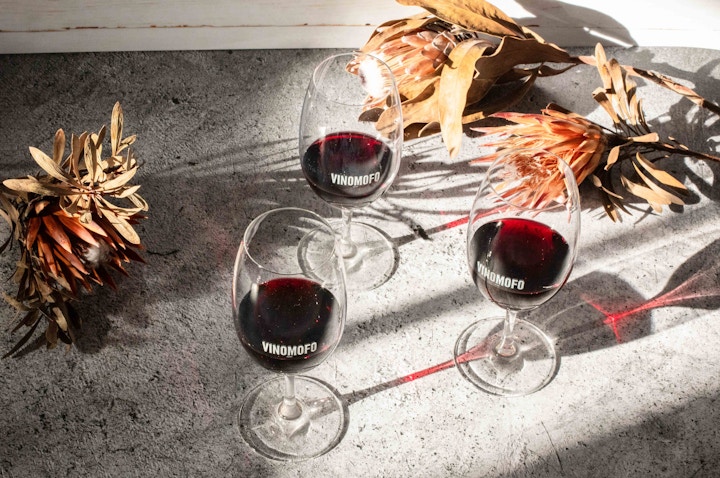5 reasons why winemakers love the heartbreak grape – pinot noir
It’s the grape that has broken a thousand winemakers’ hearts. A varietal so fickle that it’s been dubbed the ‘heartbreak grape’, pinot noir is a true mofo to get right. As Napa Valley winemaking legend André Tchelistcheff put it: “God made cabernet sauvignon, whereas the devil made pinot noir.” But you’ve got to give the devil his due: when pinot noir is good, it’s worth going to hell for.
Complex, elegant, subtle; pinot noir is an all-rounder beloved by wine snobs and wine plebs alike. It’s also well on its way to becoming one of Australia’s favourite red grapes (we smashed around 50,000-odd tonnes of the stuff last year).
So, in honour of one of our favourite red wines, here’s five reasons why winemakers can’t help but fall head over heels for the heartbreak grape.

1. It’s the OG of the fine wine world.
Ever heard of a little wine region called Burgundy? When you’re talking Burgundy reds you’re talking pinot noir. Pinot noir is one of the world’s oldest varietals, and Burgundians have been finessing it since Medieval times. In his life as a sommelier, before kickstarting his Oregon winery Maison Noir Wines, André Hueston Mack bossed the wine lists of some of America’s poshest restaurants (think French Laundry and Per Se). Burgundy pinot noir was one of his all-stars, no doubt aided by the fact that pinot noir plays so nicely with food. “All the great wine lists that I have ever built bookend on red and white Burgundy,” he says. When stepping out as a winemaker, André had to try his luck with this saucy grape: “With its perfume aroma and silky texture, it's seductive.”

2. It’s a double act.
Just north of Burgundy is another French wine village that looms large; the birthplace of bubbly, Champagne. And the grape commanding the most plantings there – pinot noir. We know what you’re thinking; pinot noir is indeed a red grape. And yet pinot noir, along with chardonnay and pinot meunier, are the triumvirate that define the world’s most famed sparkling. Pinot noir is a regular fixture in bubblies outside of the Champagne AOC, too, with many traditional method sparkling wines from around the globe (including a bunch of our personal faves) resting on a backbone of pinot noir.

3. It’s proof that good wine starts on the vine.
When embarking on a love affair with pinot noir, a viticulturalist is a winemaker’s ultimate wingman. With its notoriously thin-skinned fruit, pinot noir is a high-maintenance vine from the day it unfurls its first leaves. Sunburn, frost, heat, cold, disease, pests, rot, wind, boggy soil, smoke taint – you name it, it can snuff out pinot noir. And the battle doesn’t end once the low-yielding fruit reaches the winery floor. Delicate flower that it is, pinot noir demands careful fruit handling and fermentation, and extreme caution during maturation. Despite all of this, it’s a challenge winemakers like André just can’t resist.

4. It tells the story of place.
The very sensitivity that gives pinot noir its diva rep is also what makes it so loveable – it speaks of provenance unlike any other. The terroir of pinot noir (that’s wine wanker for the expression of place in wine) comes through in every bottle. The standard bearer, Burgundy, produces aromatic and savoury pinot noirs. Pinot noirs from Australia, especially the cool-climate regions of the Adelaide Hills, Tasmania, Mornington Peninsula and the Yarra Valley, are becoming known as bright wines with smooth tannins. (Not wanting to boast, but our very own Duck Sauce Pinot Noir 2018 by the legend Steve Webber and The Don Pinot Noir 2016 from Yarra Valley heavyweights Oakridge are case in point).
New Zealand pinot noir tends to be bigger with less acidity (check out Central Otago’s Wild Earth Pinot Noir 2018 by one of our favourite women in wine Jen Parr; trust us) while pinot noir from California also tends to be more boisterous and fruit-forward. Stateside, André set his sights further north on Willamette Valley, Oregon. “It has the fruit that you associate with California and the terroir or ‘taste of the land’ that you associate with Europe and they meet in this glorious place,” André says. “Each year it's my job to try to capture and harness that and put it in a bottle.” If you’ve been lucky enough to get your mitts on a bottle of pinot noir from this game-changing US wine region, you know what he’s talking about.

5. It’s a critic darling.
Want to prove your chops as a winemaker? With pinot noir comes the glory. She’s a cruel mistress, but a good vintage can pay a winemaker’s devotion back in droves. Pinot noirs consistently rank among the world’s most prestigious drops (the ones you’ll find on the eye-watering end of the wine list) and critics can’t get enough of them. That’s not to say you can’t get a lip-smacking pinot noir with change from a pineapple, just that it’s worth forking over a little more than you’d spend on a ballsy, brassy red to appreciate the varietal’s complexity. “It evolves in the glass, provoking conversation every time you pick up the glass,” André says. Knowing the difficulty of conquering pinot noir only adds to this enjoyment, he insists.
So next time you swirl a sultry pinot noir around your glass, spare a thought for the winemaker. They’ve survived a love affair with the heartbreak grape, and that bottle tells the tale.
Want to find the best pinot noir wines online? We’ve got you.

